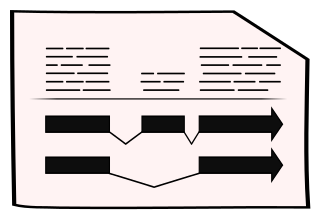Heligmosomoides polygyrus (Heligmosomoides bakeri)
BioProject PRJEB1203 | Data Source Wellcome Sanger Institute | Taxonomy ID 6339
About Heligmosomoides polygyrus (Heligmosomoides bakeri)
The nematode Heligmosomoides polygyrus (formerly known as Nematospiroides dubius) is a common parasite found in the duodenum and small intestine of woodmice and other rodents. The laboratory strain that has been sequenced was originally isolated from Peromyscus in California (Behnke and Harris, 2010); natural parasites from European wood mice (Apodemus sp.) are somewhat distinct, giving rise to some debate about the correct name and taxonomy of this species (Cable et al, 2006; Behnke and Harris, 2010; Maizels et al, 2010), with suggestions that the laboratory strain is named H. polygyrus bakeri or H. bakeri, and the European strain H. polygyrus polygyrus. The laboratory strain has been maintained as described by Camberis et al (2003) and is often used to model human helminth infection as it can establish chronic infection in different strains of mice.
There is 1 alternative genome project for Heligmosomoides polygyrus available in WormBase ParaSite: PRJEB15396
Genome Assembly & Annotation
Assembly
The draft genome assembly was produced by the Parasite Genomic group at the Wellcome Trust Sanger Institute, in collaboration with Rick Maizels (Edinburgh University) as part of the 50 Helminth Genomes project. The assembly uses Illumina paired-end sequencing followed by an in-house genome assembly pipeline comprising various steps, including contig assembly, scaffolding, gap-filling and error-correction.
Annotation
The gene predictions were made by the Parasite Genomics group at the Wellcome Trust Sanger Institute and WormBase, as part of the 50 Helminth Genomes project. An in-house pipeline was developed that used MAKER to generate high-quality annotations by integrating evidence from multiple sources: ab initio gene predictions from AUGUSTUS, GeneMark-ES, and SNAP; projected annotation from C. elegans (using GenBlastG) and the taxonomically nearest reference helminth genome (using RATT); and ESTs, mRNAs and proteins from related organisms aligned to the genome using BLAST, with refinement of alignments using Exonerate.
Downloads
Tools
Key Publications
- International Helminth Genomes Consortium. Comparative genomics of the major parasitic worms. Nat Genet, 2019;51(1):163-174
Navigation
Assembly Statistics
| Assembly | H_bakeri_Edinburgh_0011_upd, GCA_900618505.1 |
| Strain | Scotland/Edinburgh |
| Database Version | WBPS19 |
| Genome Size | 560,662,278 |
| Data Source | Wellcome Sanger Institute |
| Annotation Version | 2014-06-50HGPpatch |
Gene counts
| Coding genes | 27,459 |
| Gene transcripts | 27,459 |
Learn more about this widget in our help section
This widget has been derived from the assembly-stats code developed by the Lepbase project at the University of Edinburgh











